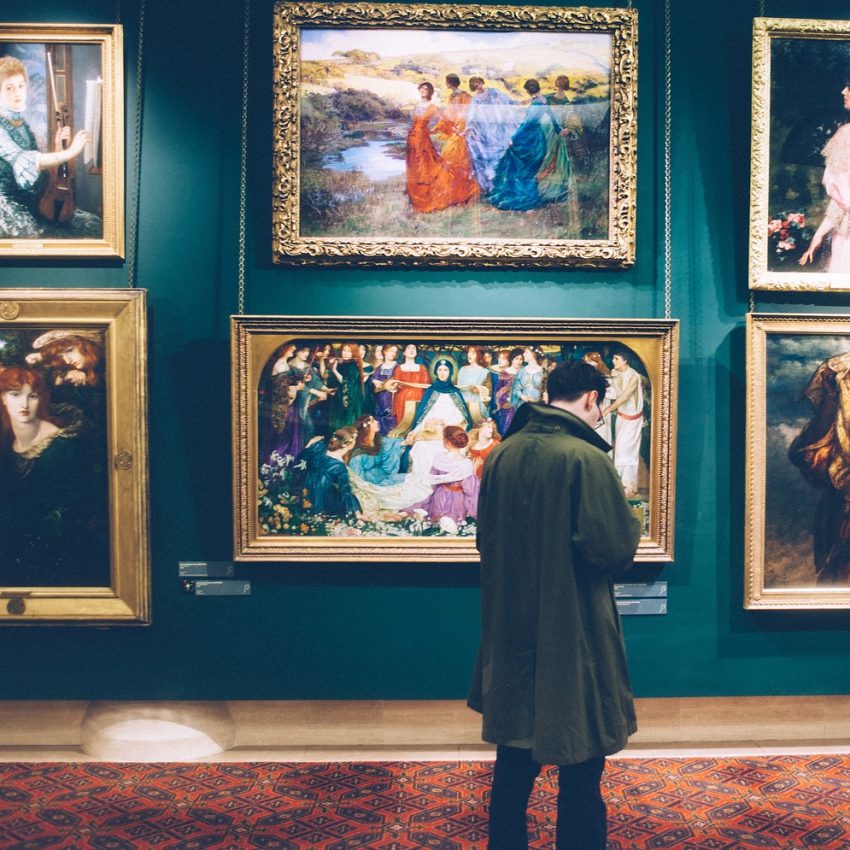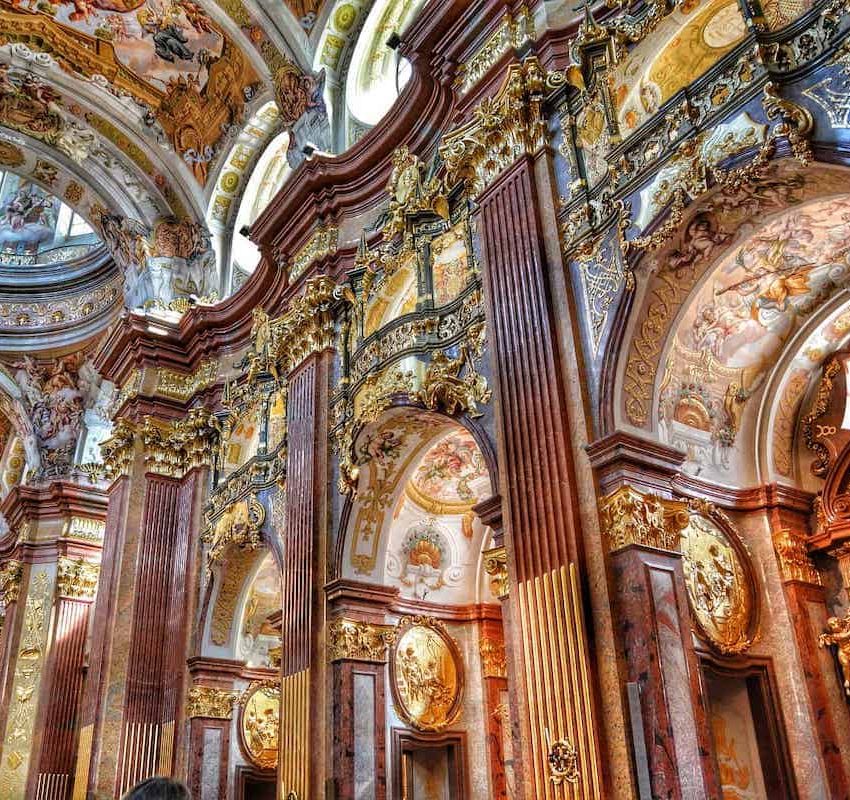Banksy Art
Street Creativity
Graffiti Artist Banksy, the elusive street artist, political provocateur, and cultural icon, has left an indelible mark on the global art scene.
His satirical stencils, subversive messages, and clandestine installations challenge authority, question norms, and ignite conversations.
In this comprehensive exploration, we delve into the enigma of Banksy’s art, tracing its origins, impact, and the enduring fascination it holds for admirers worldwide.
Why Banksy?
Banksy isn’t just an artist; he’s a phenomenon. Here’s why this journey into his world is worth your time:
- The Veil of Anonymity: Banksy’s true identity remains shrouded in secrecy. Is he a lone artist or a collective? The mystery fuels intrigue.
- Street Art as Activism: His canvas is the urban landscape. His art isn’t confined to galleries; it spills onto walls, bridges, and public spaces. It’s a guerrilla act of dissent.
- Cultural Commentary: Banksy’s works dissect politics, consumerism, war, and social justice. Each piece is a visual op-ed, challenging us to think beyond the surface.
Banksy's Early Life and Rise to Prominence
The Bristol Underground Scene
Banksy was born in Bristol and grew out of the Bristol underground subculture.
Collaborations with musicians and artists shaped his early style.
Banksy, whose real identity remains a mystery, burst onto the street art scene in the early 1990s, honing his craft on the streets of Bristol, England.
His iconic stenciled images began to appear on walls and buildings across the city, captivating passersby with their boldness and wit.
The artists work quickly gained attention for its subversive themes and irreverent commentary on contemporary society.
His residency in New York during October 2013, titled “Better Out Than In,” saw him produce a series of new pieces, each drawing crowds and media attention, solidifying his status as a global phenomenon.
Stenciling Technique: A Creative Breakthrough
Signature Style
While Banksy initially experimented with various forms of street art, it was 3D’s stenciling technique that truly captivated him.
By utilizing stencils, Banksy found a way to create detailed and visually striking images with remarkable efficiency.
This method allowed him to produce intricate designs quickly and discreetly, enabling him to leave his mark on the urban landscape with unprecedented precision.
The Evolution of Banksy's Artistic Style
His artistry transcends traditional graffiti, incorporating elements of satire, humor, and social critique.
His stencil technique allows for intricate detailing and rapid execution, enabling him to produce works of staggering complexity with remarkable speed.
Pieces like “Mild Mild West” and “Space Girl” showcase the artists versatility, blending whimsical imagery with profound messages about freedom, rebellion, and the human condition.
Influence of 3D
The artists evolution as an artist was shaped by a myriad of influences, including the pioneering work of fellow graffiti artists.
One such influence was 3D, a member of the iconic musical group Massive Attack and a celebrated graffiti artist in his own right.
3D’s innovative approach to street art, characterized by intricate stenciling techniques and bold imagery, inspired Banksy to experiment with new methods of expression.
Banksy: Redefining Art
Banksy’s art defies conventional definitions, blurring the lines between vandalism and high art.
His graffiti pieces, often appearing overnight on city walls, challenge the notion of where art belongs and who it is meant for.
By reclaiming public spaces as his canvas, Banksy democratizes art, bringing it directly to the people.
The Power of Banksy's Artwork
Inspired by 3D’s innovative approach, Banksy began to refine his own stenciling technique, pushing the boundaries of what was possible in the realm of street art.
His early experiments with stents paved the way for some of his most iconic works, including perhaps the most famous “Balloon Girl” and “One Nation Under CCTV.”
Through his collaboration with 3D and other artists, Banksy honed his craft, developing a distinct visual language that would come to define his artistic legacy.
The artists’ work is not merely decorative; it is a powerful medium for political and social commentary. Each piece tells a story, conveying messages of protest, dissent, and solidarity.
From his iconic works of political and social conversation such as of the “Balloon Girl” to the poignant “One Nation Under CCTV,” Banksy’s imagery resonates with audiences worldwide, sparking conversations and inspiring change.
Impact Beyond the Streets
While Banksy is best known for his outdoor murals and graffiti, his influence extends far beyond the confines of the urban landscape.
In recent years, he has ventured into the world of gallery art, with original artworks fetching record prices at prestigious auctions around the world.
Additionally, reproductions of his street graffiti have been exhibited in galleries, allowing a wider audience to experience his thought-provoking creations.
His debut at the 2010 Sundance Film Festival with the documentary film Exit Through the Gift Shop offered audiences a rare glimpse into his enigmatic world, further cementing his reputation as a cultural icon.
Influence within the Street Art Community
Banksy’s impact extends beyond his artwork to his influence on other artists within the street art community.
Figures like Nick Walker, a renowned street artist in his own right, have been inspired by Banksy’s innovative techniques and subversive themes.
Walker’s work, which often features intricate stenciling and bold imagery, bears the unmistakable imprint of Banksy’s influence, reflecting the broader cultural shift sparked by Banksy’s rise to prominence.
The Global Canvas
Banksy’s influence transcends geographical boundaries, with his murals appearing in conflict zones, refugee camps, and bustling cities around the world.
His artwork can be found on unexpected canvases, from the side of a building, the side of Reading Prison, to the walls overlooking the West Bank barrier.
From the streets of Bethlehem to the walls of New York, Banksy’s art serves as a powerful reminder of the human experience in all its complexity and diversity.
Global art market Impact
He has exerted a profound influence on artists and creators across various mediums, encouraging them to delve into social and political themes within their work.
Moreover, the popularity of his art has disrupted conventional distinctions between high and low art, prompting a reevaluation of the exclusivity often associated with the art world.
A Statement on Multiculturalism
In one notable intervention, Banksy also had his artwork appear on the walls of the Muslim Cultural Centre, making a powerful statement about multiculturalism and the importance of unity in diversity.
By choosing to engage with spaces of cultural significance, Banksy demonstrates a keen awareness of the social and political dynamics at play in contemporary society.
His art serves as a catalyst for dialogue and reflection, challenging viewers to confront their own prejudices and preconceptions.
Environmental Advocacy
In addition to his commentary on social and political issues, Banksy has also used his art to advocate for environmental causes.
One of his notable pieces features the phrase “believe in global warming,” accompanied by a poignant image that underscores the urgent need for action on climate change.
By drawing attention to this pressing issue, Banksy demonstrates the power of art to inspire change and galvanize public opinion.
Eloquent Imagery
In his artwork, Banksy often employs eloquent imagery to convey profound messages about contemporary society.
One striking example is the image of “chasing a burning tyre,” a powerful metaphor for the futility of chasing after destructive or unsustainable pursuits.
Through this evocative imagery, Banksy invites viewers to reflect on the consequences of our actions and to consider alternative paths toward a more sustainable and equitable future.
Art as Activism
Nowhere is this more evident than in the artists creation of the “Walled Off Hotel,” a daring statement overlooking the Israeli West Bank wall.
This provocative project not only challenges the physical and metaphorical barriers that divide us but also serves as a poignant commentary on the ongoing Israeli-Palestinian conflict.
By transforming a symbol of division and oppression into a space for reflection and dialogue, the artist demonstrates the transformative power of art as a catalyst for change.
The hotel’s location, overlooking the barrier, adds to its significance, marking the anniversary of Hurricane Katrina and serving as a reminder of the resilience of communities in the face of adversity.
Dismaland: A Satirical Masterpiece
Similarly, the artists dystopian theme park, Dismaland, offered a scathing critique of consumer culture and the commodification of human experience.
Set in the seaside town of Weston-super-Mare, Dismaland was a surreal and unsettling exploration of modern society’s obsession with entertainment, consumption, and spectacle.
Through immersive installations and interactive exhibits, the artist invited visitors to confront uncomfortable truths about the world in which we live and to imagine alternative futures free from the constraints of capitalist ideology.
The presence of imagery like an athlete throwing a missile and references to surface-to-air missiles further underscored the park’s subversive themes and satirical commentary on contemporary society.
The Identity Puzzle
The Controversy Surrounding The Artist's Identity
One of the enduring mysteries of his career is the question of his true identity.
Speculation has run rampant, with numerous theories circulating about who might be behind the pseudonym.
Some have suggested that it is a collective of artists known as Banksy, while others believe he is a well-known figure working under a cloak of anonymity.
Regardless of his identity, the artist’s refusal to conform to conventional notions of celebrity has only added to his mystique, fueling public fascination and media speculation.
His anonymity amplifies his impact.
The Artist's Critique of Consumerism
In his art, Banksy often confronts the pervasive influence of consumerism on contemporary society. One of his most striking images depicts Ronald McDonald and Mickey Mouse holding hands, seemingly engaged in a friendly embrace.
However, upon closer inspection, it becomes clear that their union is not one of friendship but rather a cynical commentary on the power of corporate branding and the manipulation of popular culture for profit.
By juxtaposing these beloved childhood characters with darker, more sinister imagery, Banksy subverts their traditional associations with innocence and nostalgia.
The presence of Mickey Mouse and Ronald McDonald in the artist’s work serves as a stark reminder of the insidious nature of corporate influence and the ways in which multinational corporations exploit sentimentality to sell products and perpetuate their agendas.
Challenging the Status Quo & Subversive Messages
The artist’s use of Mickey Mouse and Ronald McDonald in his artwork is emblematic of his broader mission to challenge the status quo and provoke critical reflection on contemporary issues. Through his subversive imagery, Banksy forces viewers to confront uncomfortable truths about the world in which we live, encouraging us to question the narratives perpetuated by mainstream media and consumer culture.
From “Girl with Balloon” to “Flower Thrower,” each piece by Banksy carries a powerful message that challenges the status quo and prompts viewers to reconsider their assumptions about the world around them.
“Girl with Balloon,” with its simple yet profound imagery of a young girl reaching for a heart-shaped balloon, speaks to themes of innocence, hope, and the ephemeral nature of love.
The Power of Visual Satire
In the hands of Banksy, Mickey Mouse and Ronald McDonald become symbols of corporate greed and cultural hegemony, rendered with biting wit and incisive commentary.
His ability to harness the power of visual satire to critique the excesses of capitalism and the erosion of social values has cemented his reputation as one of the most influential artists of his generation.
The inclusion of Ronald McDonald and Mickey Mouse in the artist’s artwork underscores his commitment to using art as a tool for social and political commentary.
Through his subversive imagery, Banksy challenges us to reexamine the world around us and consider the ways in which corporate influence shapes our perceptions and values. In doing so, he reminds us of the power of art to disrupt, provoke, and inspire change.
Similarly, “Flower Thrower” depicts a figure clad in a hoodie, poised to throw a bouquet of flowers rather than a weapon. This iconic image serves as a potent symbol of peaceful resistance, challenging traditional notions of power and authority while advocating for nonviolent protest and social change.
"Love is in the Bin": An Act of Defiance
Perhaps one of the artists most audacious works, “Love is in the Bin” shredded itself moments after being sold at auction, leaving jaws dropped and sparking widespread speculation about the nature of art and the value of authenticity.
This act of defiance underscored his commitment to challenging the commodification of art and the cult of celebrity, while also inviting viewers to question the nature of value and the role of the artist in contemporary society.
Collecting Banksy
The Thrill of Discovery
One of the most captivating aspects of Banksy artwork is the thrill of discovery.
His street art, often ephemeral in nature, invites viewers to embark on a treasure hunt of sorts, scouring city walls and urban landscapes in search of hidden gems.
The transient nature of the artists work adds to its allure, as each piece becomes a fleeting moment of beauty and defiance in a rapidly changing world.
Street vs. Gallery: The Duality of The Art
While the artist’s street art may be ephemeral, the impact of his work is enduring.
Galleries around the world sell prints and reproductions of his most famous pieces, offering collectors the opportunity to own a piece of his subversive genius.
Yet, for many, the true thrill lies in spotting an original artists work on a city wall, where it was meant to be seen, experienced, and debated by the public.
The Importance of Authenticity
In a world where street art can be easily replicated and reproduced, authenticity is paramount.
Banksy created the decision to establish “The Pest Control Agency” as his official authentication body underscores his commitment to ensuring the legitimacy of his work and protecting it from exploitation or forgery.
By providing a means for collectors to verify the authenticity of their acquisitions, the artist instills confidence in the integrity of his art and safeguards its value for future generations.
The Authentication Process: Ensuring Legitimacy
Part of the artist’s work authentication process involves meticulous attention to detail.
When you next see an artwork of the artist, see if you notice the stenciled serial numbers that accompany many of his works.
This unique identifier not only serves as a mark of authenticity but also underscores the artist’s commitment to transparency and integrity in the art world.
By including these serial numbers in his pieces, the artist ensures that each artwork can be traced back to its origin, providing collectors with peace of mind and preserving the integrity of his artistic legacy.
The Role of Pest Control in the Art World
Pest Control serves as a gatekeeper of sorts, determining which pieces are genuine / o Banksy creations and which are imitations or unauthorised reproductions.
This process not only protects collectors from purchasing counterfeit works but also preserves the integrity of the artist’s artistic vision and ensures that his legacy remains untarnished by fraud or misrepresentation.
Navigating the Market
For collectors and enthusiasts alike, navigating the market for Banksy graffiti and new Banksy pieces can be a daunting task.
With so many prints, reproductions, and unauthorized pieces circulating, distinguishing between genuine Banksy works and fakes can be challenging.
Pest Control provides a valuable service in this regard, offering a reliable source of authentication and guidance for those seeking to acquire the artist’s art with confidence.
Banksy's Legacy and Continued Influence
As the artist’s work continues to inspire and provoke, his legacy looms large over the contemporary art world.
His pieces serve as potent reminders of the power of art to challenge, disrupt, and inspire change.
Whether he is tagging walls in East London or selling works at prestigious galleries, Banksy remains a force to be reckoned with, a symbol of artistic defiance in an increasingly homogenized world.
Everyone wants a piece of Banksy.
As you navigate the urban jungle, keep your eyes peeled—you might just stumble upon a piece of Banksy’s soul.





